Why Are Fatal Hit-and-run Accidents At an All-time High?

Roadway fatalities have been on the decline relative to population since the 1970s. However, the safest year on record since car ownership became commonplace was actually 2014. Deaths spiked in the following two years, with a very modest decline in 2017. While some of the increase can be attributed to more people driving more miles than ever before, accounting for both elements still results in a higher overall rate of fatal incidents.
Hit-and-run statistics mimic this trend, with 2,046 pedestrian deaths reported in 2016. It’s not the total number that’s alarming — it’s the rate of increase, too. The AAA Foundation for Traffic Safety now claims hit-and-run fatalities are becoming a serious issue; reported incidents within the United States have seen a 60-percent increase since 2009. In fact, they’re the highest they’ve been since the NHTSA started keeping track in 1975.
Figuring out why is the difficult part, though. It may simply be due to the number of pedestrians and motorists distracted by their phones. Urban centers have also seen steady population growth of late. Perhaps simply putting so many cars and people in a smaller area are causing the problem.
There’s some credence to the latter assumption. According to Auto Insurance Center, which broke down existing data on hit-and-run accidents using data acquired from the NHTSA’s Fatality Analysis Reporting System, more than 2 in 3 of the hit-and-run deaths from 2016 involved pedestrians and/or bicyclists. While it’s safe to assume most fatal collisions between vehicles don’t normally allow one to putter off afterward, motorists are also less likely to come into contact with individuals forgoing motorized transport on the highway.
The states with the highest rate of fatal-hit-and runs per 100,000 residents were Nevada, Florida, Tennessee, Texas, California, South Carolina, Louisiana, Connecticut, and Alaska. However, New Mexico surpassed them all with 2.4 deadly hit-and-runs per 100,000 people in 2016 — the most recent year with sufficient data.
Tring to find correlations between the state is difficult. While a number had above-average homelessness rates and most were on the high end of roadway fatalities relative to their population, there were multiple outliers. For example, Connecticut had one of the lowest death rates overall in 2016 and New Mexico’s homeless population is average relative to its size.
States also vary wildly in terms of seasonal weather conditions. But incidents tended to be more common in the months where foot traffic would be more common and drop sharply during the coldest parts of the year. October typically saw a large spike in hit-and-runs, almost assuredly due to Halloween. Still, even this was not true every single year.
The Auto Insurance Center also broke down the recorded reasons for a hit-and-run. Many incidents were attributed to things like failure to yield, careless driving, or reckless driving. Over 6 percent were deemed to be non-traffic violations and were instead categorized as manslaughter, homicide, or assault committed without malice — which isn’t particularly useful.
In fact, most of the collisions have no identifying factor, and many drivers are never caught. Overall, police only make arrests in about 1 percent of all hit-and-run crashes each year, a rate that has remained stagnant since 2013. Even New York City, which typically has more witnesses and ways to catch hit-and-run offenders, only nabs about 9 percent of them. While it’s usually a little easier to catch individuals who flee the scene after fatally striking someone, 2 in 3 still get away, according to the NYPD.
“Hit-and-run crashes in the United States are trending in the wrong direction,” Dr. David Yang, executive director of the AAA Foundation for Traffic Safety, said in the press release accompanying the study. “Our analysis shows that hit-and-run crashes are a growing traffic safety challenge and the AAA Foundation would like to work with all stakeholders to help curtail this problem.”
[Images: Auto Insurance Center ]

A staunch consumer advocate tracking industry trends and regulation. Before joining TTAC, Matt spent a decade working for marketing and research firms based in NYC. Clients included several of the world’s largest automakers, global tire brands, and aftermarket part suppliers. Dissatisfied with the corporate world and resentful of having to wear suits everyday, he pivoted to writing about cars. Since then, that man has become an ardent supporter of the right-to-repair movement, been interviewed on the auto industry by national radio broadcasts, driven more rental cars than anyone ever should, participated in amateur rallying events, and received the requisite minimum training as sanctioned by the SCCA. Handy with a wrench, Matt grew up surrounded by Detroit auto workers and managed to get a pizza delivery job before he was legally eligible. He later found himself driving box trucks through Manhattan, guaranteeing future sympathy for actual truckers. He continues to conduct research pertaining to the automotive sector as an independent contractor and has since moved back to his native Michigan, closer to where the cars are born. A contrarian, Matt claims to prefer understeer — stating that front and all-wheel drive vehicles cater best to his driving style.
More by Matt Posky
Latest Car Reviews
Read moreLatest Product Reviews
Read moreRecent Comments
- Flashindapan Beautiful color combinations. I assumed they stop selling the TT here at least five or six years ago.
- Carson D Just don't be the whistleblower who reports on the falsification of safety data. That's a deadly profession.
- Carson D I'd have responded sooner, but my computer locked up and I had to reboot it.
- Todd In Canada Mazda has a 3 year bumper to bumper & 5 year unlimited mileage drivetrain warranty. Mazdas are a DIY dream of high school auto mechanics 101 easy to work on reliable simplicity. IMO the Mazda is way better looking.
- Tane94 Blue Mini, love Minis because it's total custom ordering and the S has the BMW turbo engine.






















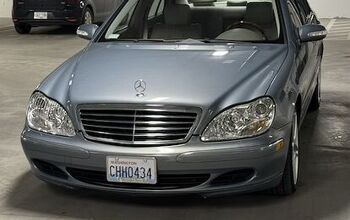

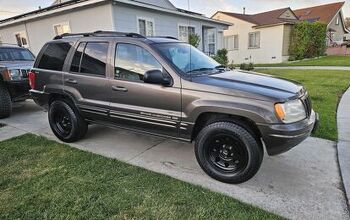
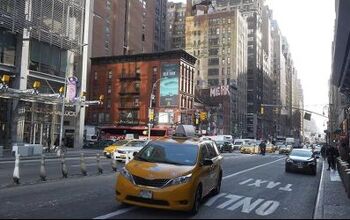

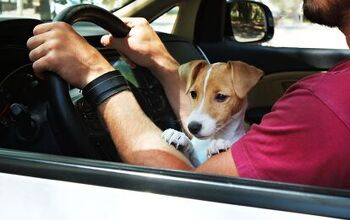



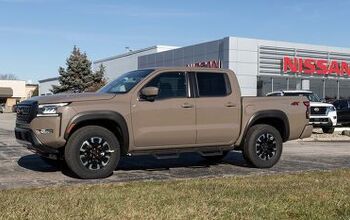




Comments
Join the conversation
Cause simplified: Big azz SUVs/trucks, drivers without formal driving instruction, cell phones.
Adding another problem. The A pillars have become huge since 2012? . That front blind spot can hide 3 or 4 pedestrians. Even worse if I am doing a rolling stop. Good thing I haven’t hit anybody yet.